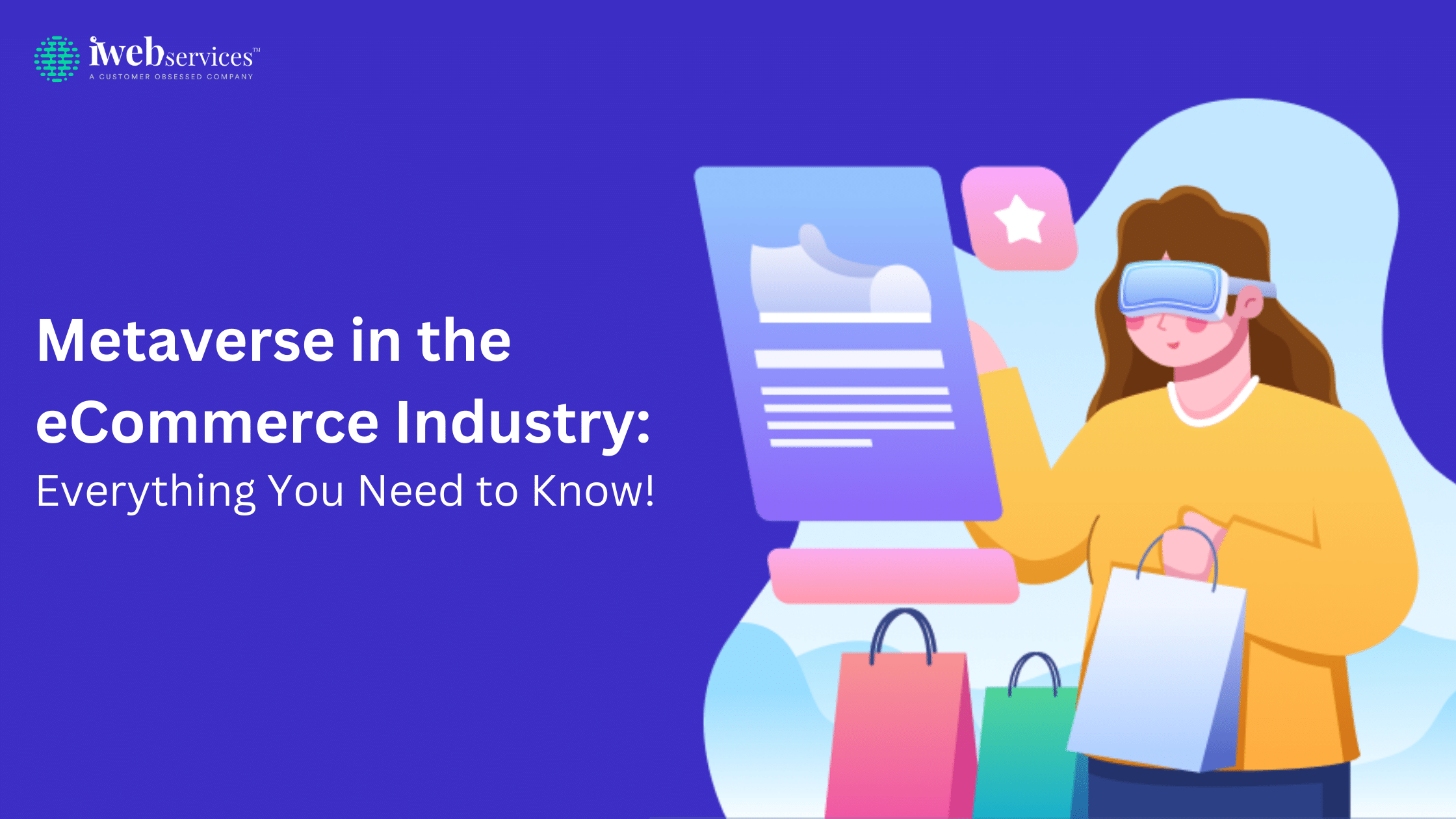Ever since Facebook’s dramatic rebranding as Meta, the Metaverse has been the buzzword on everyone’s lips.
All stakeholders, from savvy investors to curious consumers, eagerly anticipate the opportunities presented by the emergence of the virtual world and its impact on everyday life.
Every year, there has been a tremendous surge in global searches for Metaverse-related keywords and inquiries.
| Month | Searches in Google (Globally) for “Metaverse” | Searches in Google (Globally) for “What is the Metaverse?” | Searches in Google (Globally) for “Metaverse definition” |
| Jan 2019 | 12,100 | 0 | 110 |
| Jan 2020 | 14,800 | 0 | 140 |
| Jan 2021 | 33,100 | 480 | 480 |
| Jan 2022 | 5,000,000 | 201,000 | 40,500 |
| Jan 2023* | 1,860,000 | 44,800 | 27,800 |
With this rising interest in the Metaverse, it’s no wonder that people are starting to consider how this technology could transform different industries, including eCommerce.
Leading companies working on Metaverse like Amazon, Walmart, Alibaba, and Nikeland have already begun experimenting with this technology to enhance their customer experiences.
As per research, Nikeland, The Roblox-based virtual world attracted approximately 7 million visitors within its first two months of operation.

Undoubtedly, Metaverse and eCommerce have the potential to revolutionise the way we shop, interact, and transact online. With the Metaverse, the eCommerce industry could take on a whole new dimension, but what? Let’s figure out everything about the Metaverse in eCommerce industry.
Starting with-
What is Metaverse?
Metaverse can be described as a fusion of augmented reality, virtual reality, and the internet, all colliding into a vibrant digital world. It’s a place where boundaries between the real and the virtual blur, and imagination knows no limits.
This digital world abounds with possibilities for interaction. In Metaverse, users can create avatars, participate in social events, and interact with the environment and other users.
Big players like Facebook, Roblox, and Decentraland are investing in Metaverse technology and creating their own virtual worlds.
What Is Metaverse Ecommerce?
Metaverse eCommerce refers to the convergence of online retail and in-person shopping within the Metaverse. This innovative form of commerce combines the convenience of virtual shopping with immersive experiences and captivating 3D visuals.
What sets Metaverse eCommerce apart is its utilization of cryptocurrency and blockchain technology for secure and transparent transactions. By embracing the Metaverse, businesses can create a dynamic shopping environment that transcends traditional boundaries and offers customers a truly interactive and engaging retail experience.
Moreover, to enter this platform, you need some components. It comprises fundamental elements such as the environment, interface, interaction, and security,
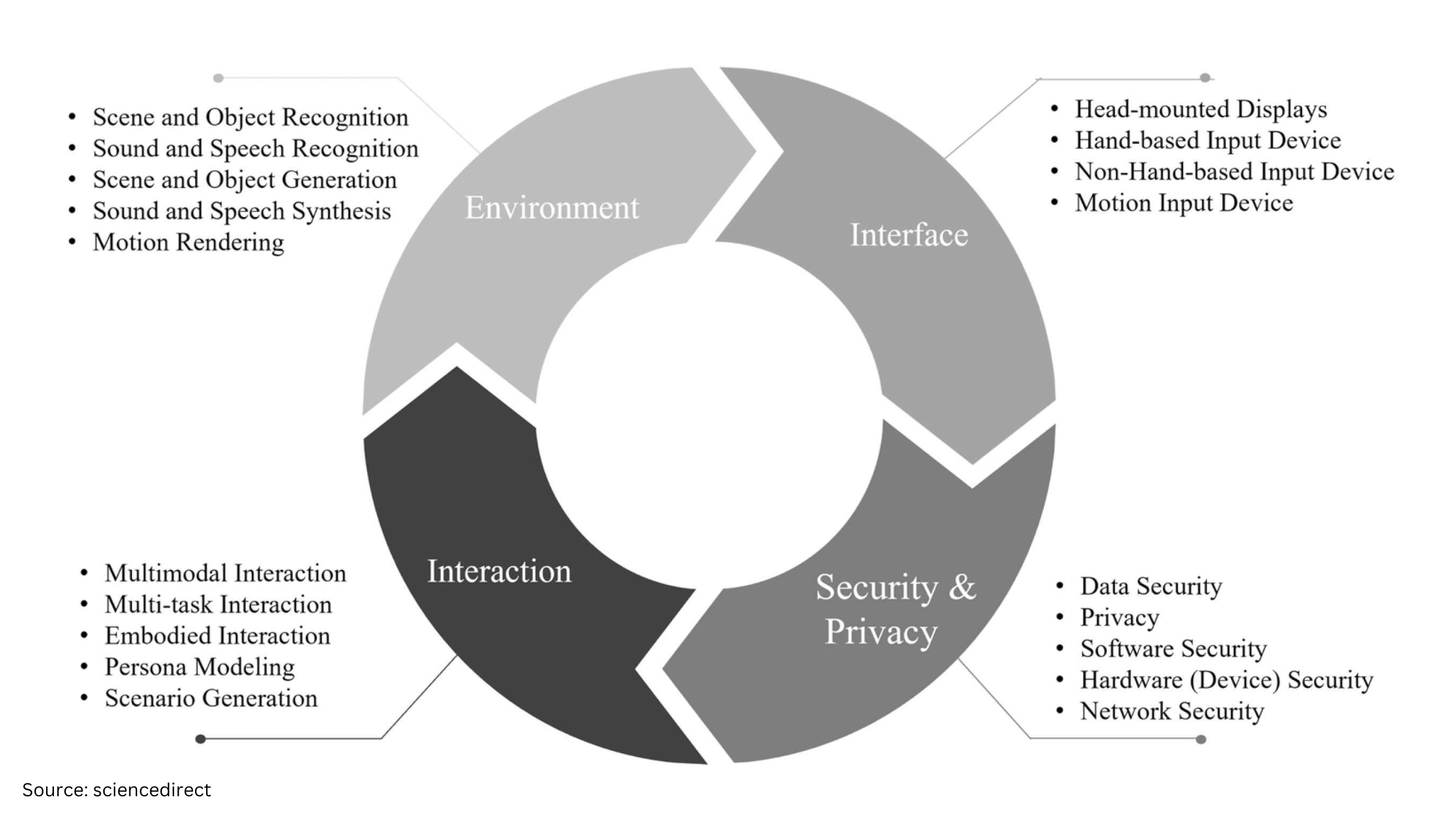
Elaborating more, here’s a concise explanation of the components of Metaverse eCommerce:
- Virtual Marketplaces: Interactive digital hubs for brands and consumers.
- Avatar Customization: Personalizing digital avatars for self-expression.
- Virtual Product Catalogs: Showcasing a range of digital and physical goods.
- AR and VR Integration: Immersive experiences for trying and exploring products.
- Social Interaction and Communities: Connecting with others and engaging in discussions.
- Integrated Payment Systems: Seamless and secure transactions within the Metaverse.
- Cross-Platform Integration: Accessible from various devices for a consistent experience.
How Is eCommerce in the Metaverse Different From Traditional One?
Metaveset’s eCommerce differs from traditional eCommerce in several aspects, including:…
| Aspects | eCommerce in the Metaverse | Traditional eCommerce |
| Personalization | Highly personalized experiences and customization | Limited personalization through product recommendations |
| Human Interaction | Bridges the gap between product landing pages and human interaction | Solitary shopping experience with minimal human interaction |
| Brand Ecosystem | Dives deeper into the brand ecosystem | Focuses on product recommendations and discounts |
| Community Engagement | Fosters community engagement between brands, products, and customers | Creates solitary shopping experiences |
| Digital Natives Focus | Caters to a generation comfortable with the digital goods economy | Initially targeted towards a wider range of consumers |
| Physical Integration | Blurs the boundaries between virtual and physical realms, allowing seamless integration | Primarily operates within the digital realm |
| Future Potential | Predicted global adoption with improved technology | Potential for a gradual shift as technology advances |
Integration of the Metaverse and eCommerce: What Key Benefits It Offers?
In the integration of the Metaverse and eCommerce, customers are in for a thrilling journey filled with immersive experiences, personalised assistance, and exciting opportunities for digital ownership and transactions.
The Metaverse is redefining the eCommerce landscape, creating a dynamic and interactive shopping environment where customers can explore, engage, and connect like never before. It’s time to embrace the Metaverse and embark on a new era of eCommerce adventure.
1. Enhancing customer engagement and interaction
- Immersive product experiences:
Metaverse in eCommerce let us step into a world where shopping is no longer limited to scrolling through static images and product descriptions. With the Metaverse, customers can now indulge in immersive product experiences that transport them into a digital realm where products come to life.
Imagine virtually trying on clothes, exploring the intricate details of a 3D model, or even test-driving a virtual car. Through interactive visuals, sounds, and haptic feedback, the Metaverse allows customers to engage with products in a whole new dimension.
- Virtual showrooms and try-on experiences:
The Metaverse offers virtual showrooms and try-on experiences that enable customers to visualize how products fit into their lives. Whether it’s virtually decking out a living room with furniture or trying on virtual fashion items, customers can get a realistic sense of how products look and feel before making a purchase.
It’s like having a personal shopping assistant at your fingertips, guiding you through a virtual wonderland of possibilities.
- Interactive social shopping:
Shopping is often a social experience, and the Metaverse takes it to the next level. Through interactive social shopping experiences, customers can connect with friends, family, or even strangers while browsing and making purchases. With this, it is easy to
- Explore virtual stores together,
- Share recommendations
- Get real-time feedback from fellow shoppers
The Metaverse transforms online shopping from a solitary endeavor into a vibrant community-driven adventure, fostering connections and turning every purchase into a shared experience.
2. Personalization and customization
- AI-driven product recommendations:
Gone are the days of sifting through countless products to find the perfect match. The Metaverse harnesses the power of artificial intelligence (AI) to deliver personalized product recommendations tailored to each customer’s preferences and needs.
By analyzing vast amounts of data, including browsing history, purchase behavior, and social media interactions, AI algorithms can suggest products that align with customers’ tastes, making the shopping experience more efficient, enjoyable, and personalized.
- Virtual personal shoppers:
Imagine having a personal shopper at your beck and call, guiding you through the Metaverse’s vast array of products and curating a selection specifically for you. Virtual personal shoppers leverage AI and machine learning to understand customers’ preferences, styles, and budgets, providing expert advice and assistance in finding the perfect products.
They can even accompany customers on virtual shopping trips, providing recommendations and answering questions in real-time, replicating the personalized service of an in-person shopping experience.
3. Virtual marketplaces and decentralized commerce
- NFTs and digital ownership:
The Metaverse introduces a concept that revolutionizes the way we perceive ownership – non-fungible tokens (NFTs). NFTs enable the creation and trade of unique digital assets, such as virtual fashion items, digital artwork, or even virtual real estate.
In the Metaverse, customers can buy, sell, and collect these one-of-a-kind digital assets, granting them a sense of exclusivity and ownership within the virtual realm. NFTs open up new avenues for creativity, investment, and self-expression, blurring the lines between the physical and digital worlds.
- Virtual currencies and transactions:
As the Metaverse expands, virtual currencies are gaining traction as a means of conducting transactions within the digital realm. Virtual currencies, often based on blockchain technology, offer secure and decentralized methods of exchanging value in the Metaverse.
Customers can use these digital currencies to make purchases, trade assets, or engage in virtual economies. This decentralization of commerce empowers customers, eliminates intermediaries, and fosters a sense of autonomy and control over their financial transactions within the Metaverse.
Potential Challenges Related To Metaverse eCommerce
- Privacy and security concerns
As the Metaverse expands, it brings forth concerns regarding privacy and security. With increased interactions and data exchange, the risk of data breaches and unauthorized access rises.
Safeguarding personal information and ensuring robust security measures become crucial to maintain user trust. Striking a balance between personalized experiences and protecting user privacy becomes a key challenge for businesses operating in the Metaverse.
- Infrastructure and accessibility barriers
The seamless functioning of the Metaverse relies on robust infrastructure and high-speed connectivity. However, accessibility and infrastructure disparities can pose challenges.
Ensuring widespread availability of reliable internet access, powerful hardware, and compatible devices is essential to ensure equitable participation in the Metaverse. Bridging the digital divide becomes imperative to prevent exclusion and ensure equal opportunities for all users.
- Integration and interoperability challenge
The Metaverse encompasses a vast array of platforms, technologies, and applications. Ensuring smooth integration and interoperability between these diverse components is a challenge.
Standardization efforts and collaboration among stakeholders become crucial to create a cohesive Metaverse experience. Interoperability enables seamless transitions between different virtual spaces and enhances the overall user experience.
- Ethical considerations and digital divide
The Metaverse raises ethical considerations surrounding user consent, data usage, and digital rights. Transparency in data collection practices and the responsible use of user information must be upheld.
Additionally, bridging the digital divide and ensuring inclusivity in the Metaverse becomes essential. Efforts should be made to provide access, support digital literacy, and address disparities to prevent the creation of further divisions in society.
Metaverse in eCommerce Industry: The Future Outlook
- Forecasting the growth of the Metaverse in eCommerce
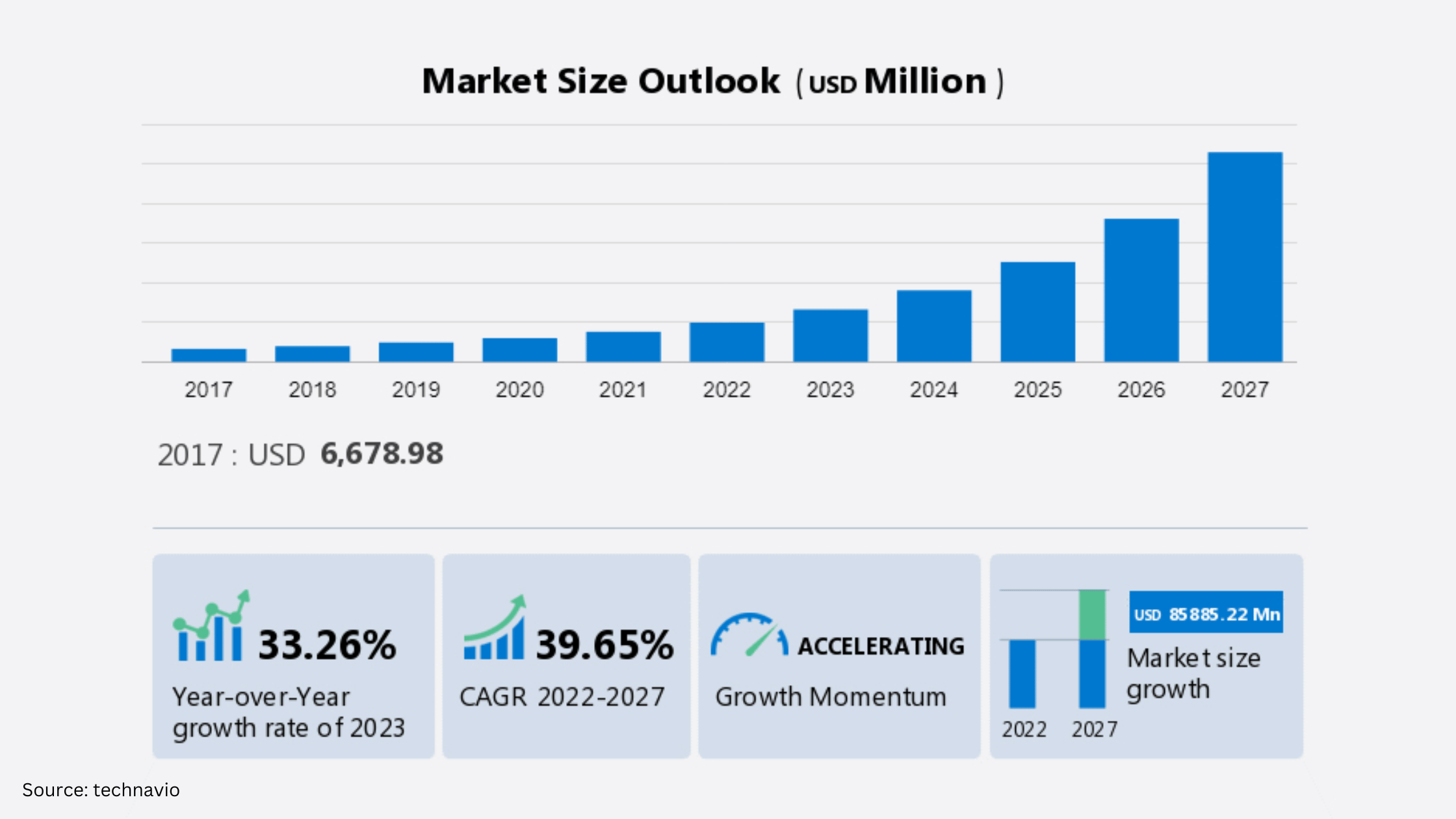
The eCommerce market’s metaverse is expected to witness growth at a CAGR of 39.65% from 2022 to 2027. The market is also projected to expand by USD 85,885.22 million during this period.
The future of the Metaverse in eCommerce looks promising, with significant growth anticipated. As technology advances and user adoption increases, the Metaverse is likely to become an integral part of the eCommerce landscape.
- Virtual shopping experiences
- Immersive product interactions
- And personalised recommendations
These are expected to become commonplace, transforming the way customers engage with brands and make purchases.
- Impact on traditional retail and brick-and-mortar stores
The rise of the Metaverse poses challenges for traditional retail and brick-and-mortar stores. As customers embrace virtual experiences, traditional retailers may face the need to adapt and incorporate Metaverse elements into their business models.
This could involve creating hybrid experiences that blend physical and virtual shopping or reimagining their stores as immersive showrooms to attract customers seeking unique experiences.
- Transformation of the supply chain and logistics
The Metaverse introduces new dimensions to the supply chain and logistics. Virtual products, digital assets, and decentralized marketplaces require innovative approaches to inventory management, fulfillment, and delivery.
Supply chains may need to evolve to accommodate virtual transactions, digital ownership, and the global nature of the Metaverse, creating opportunities for logistics providers and tech-enabled solutions.
Further details you should know: Metaverse in Education Will Transform The Industry
How Can You Open an eCommerce Store in Metaverse?
Opening an eCommerce store in the Metaverse involves a few key steps that you need to follow. Here’s a guide to help you get started on your virtual retail journey:
Step 1: Familiarize Yourself with the Metaverse
Before diving into opening your store, take the time to understand what the Metaverse is all about. It’s a virtual world comprising interconnected virtual rooms, providing a platform for various activities. Familiarize yourself with different Metaverse platforms and choose the one that suits your eCommerce idea.
Step 2: Build Your Virtual Store
Once you have selected your preferred Metaverse platform, it’s time to create your store. Develop a virtual storefront that showcases your products or services. Utilize 3D modeling tools or computer-generated imagery to design an immersive store environment complete with shelves, displays, and signage.
Step 3: Curate Your Product Catalog
After setting up your store, focus on building your inventory. Choose products and services that align with your target audience’s preferences. Consider offering free trials or samples to generate interest and awareness among potential customers. Additionally, optimize your offerings for the virtual environment to enhance the user experience.
Step 4:Promote Your Store
To attract customers to your virtual store, it’s crucial to promote and market it effectively. Utilize SEO strategies, leverage social media platforms, invest in paid promotions, and explore relevant marketing channels. Be sure to tailor your marketing efforts specifically for the Metaverse, maximizing their impact within this unique digital realm.
If you want to streamline your journey into the Metaverse, consider hiring a reputable eCommerce app development company. Their expertise can help you navigate the intricacies of establishing a successful virtual store.
By following these steps, you can embark on your Metaverse eCommerce adventure, showcasing your products and engaging with customers in this exciting virtual landscape.
Metaverse Technologies for eCommerce
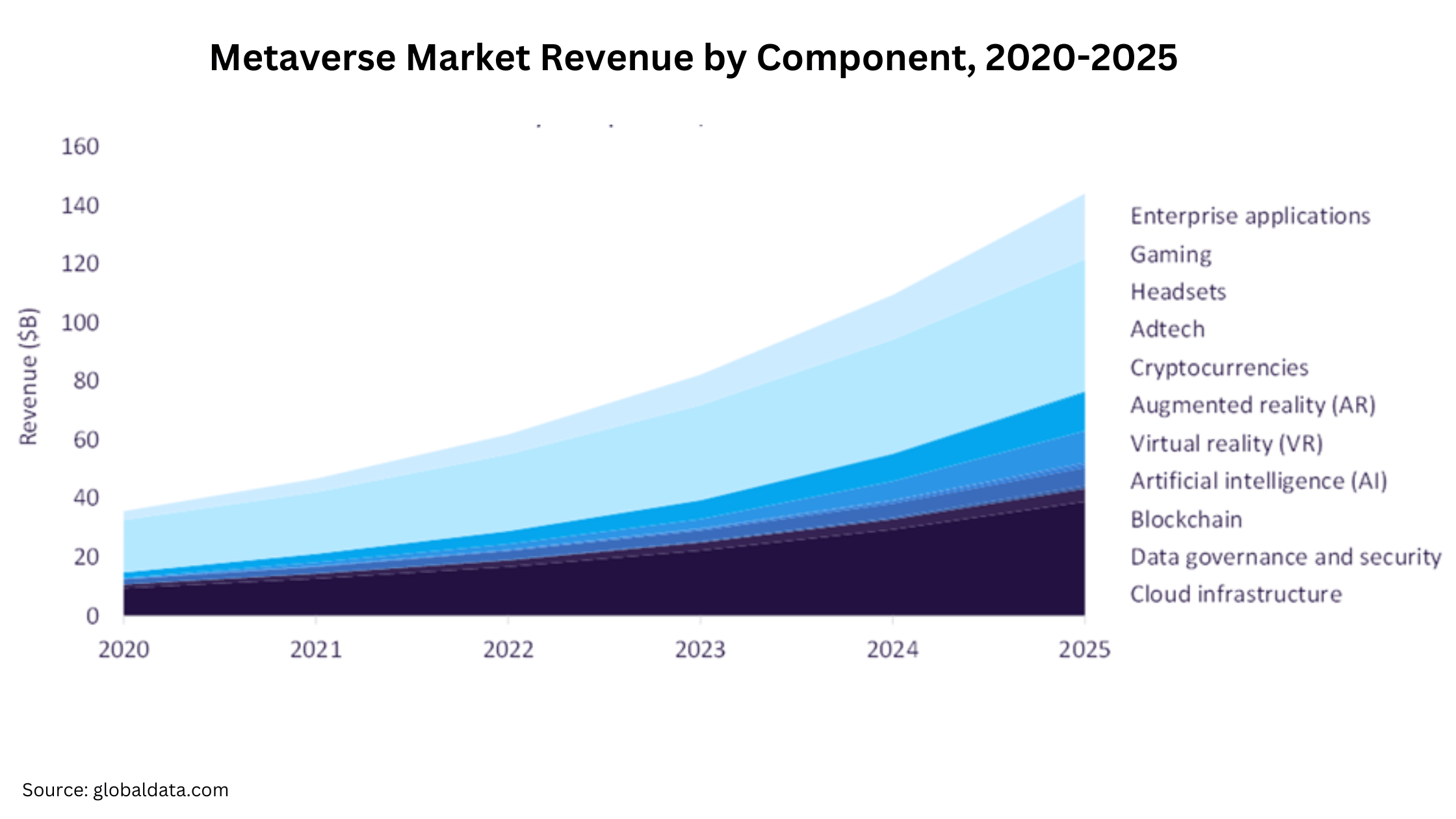
The metaverse is set to become a $144 billion opportunity by 2025, thanks to its integration of advanced technologies such as VR, AI, and blockchain. For eCommerce businesses, adopting metaverse technology can boost customer experience, security, and virtual potential. Popular technologies in metaverse platform development include:
- Blockchain:
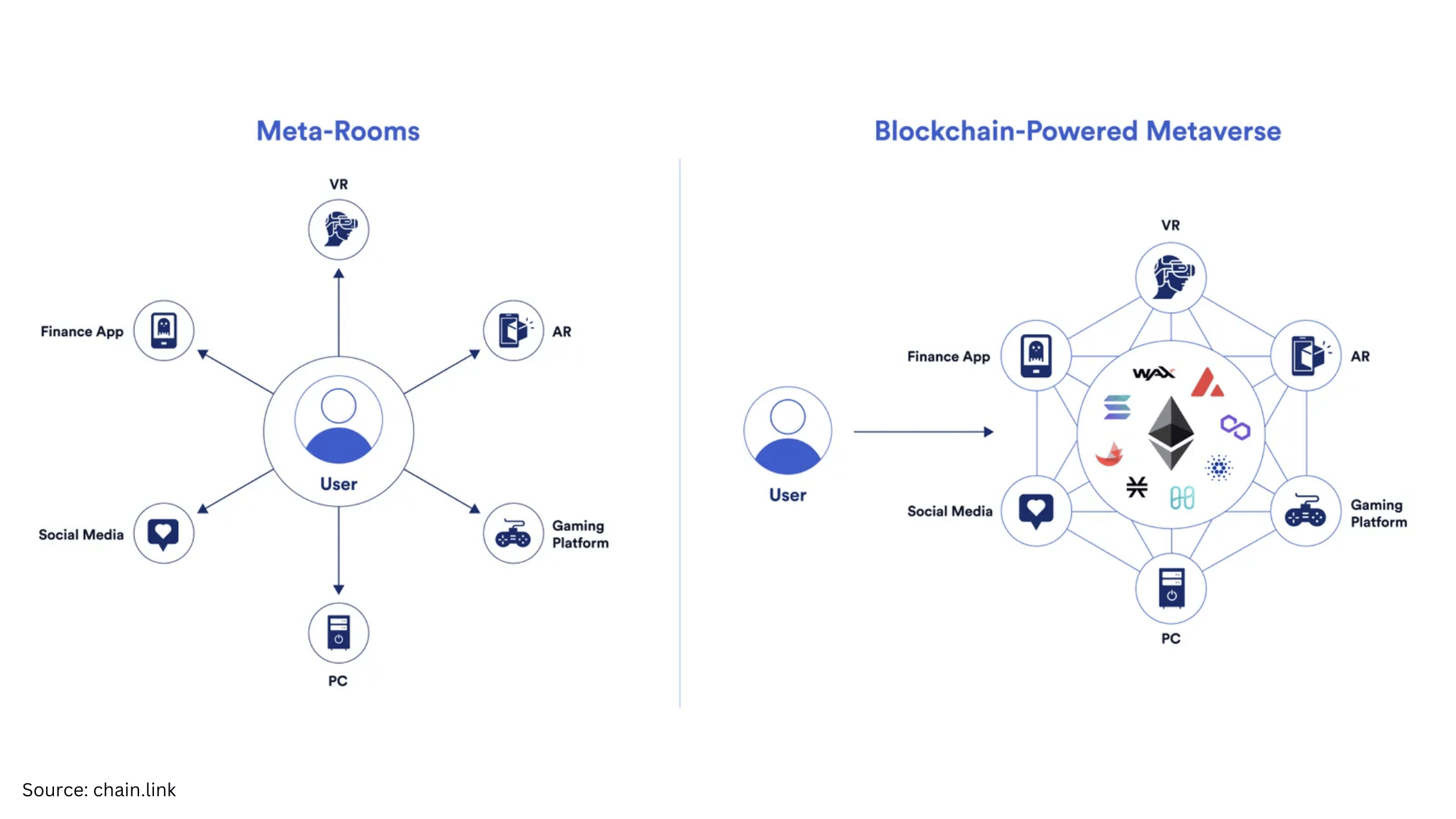
When discussing eCommerce in the Metaverse, it’s impossible to overlook the role of Blockchain technology. Privacy and transparency are key concerns in online shopping, and Blockchain addresses these issues effectively.
- By providing a secure and trustworthy payment processing system, Blockchain solves multiple challenges at once.
- Plus, it can improve supply chain management and overall efficiency.
- Notable organizations are already leveraging Blockchain in their operations, connecting buyers, sellers, and logistics providers on B2B trading platforms.
- Furthermore, Blockchain is closely tied to the concept of Web 3.0, which is integral to the Metaverse experience.
- Extended Reality (AR and VR):
According to a Google survey, 66% of individuals enjoy engaging with AR while shopping. Deloitte reports that AR experiences lead to a significant 94% increase in conversions.
In Metaverse eCommerce, AR allows customers to try on clothing virtually or visualize physical products in their own space. This experiential approach has transformed the customer journey from mere “click-and-buy” to “experience-and-buy.”
- Non-Fungible Tokens (NFTs):
NFTs have gained prominence in the Metaverse as a means of trading digital collectibles, creating digital replicas, launching products in advance, fostering customer loyalty through fan tokens, and even digitizing loyalty cards on the Blockchain.
These unique tokens represent ownership of specific digital assets and are commonly used by renowned brands in sports, music, fashion, and gaming. For example, Nike connected a real-world pair of sneakers to its virtual counterpart through an NFT.
4, Spatial and Edge Computing:
Spatial computing utilizes the physical environment as an interface for computing systems. On the other hand, edge computing is a cloud computing model that provides storage, computation, data, and application services closer to users.
Microsoft’s HoloLens exemplifies spatial computing technology in the Metaverse, enabling users to interact seamlessly with virtual elements in their physical surroundings.
As these technologies continue to evolve, it is essential to hire skilled Metaverse developers, such as those in India, to leverage their expertise and experience effectively.
Top Companies Working On Metaverse Technology
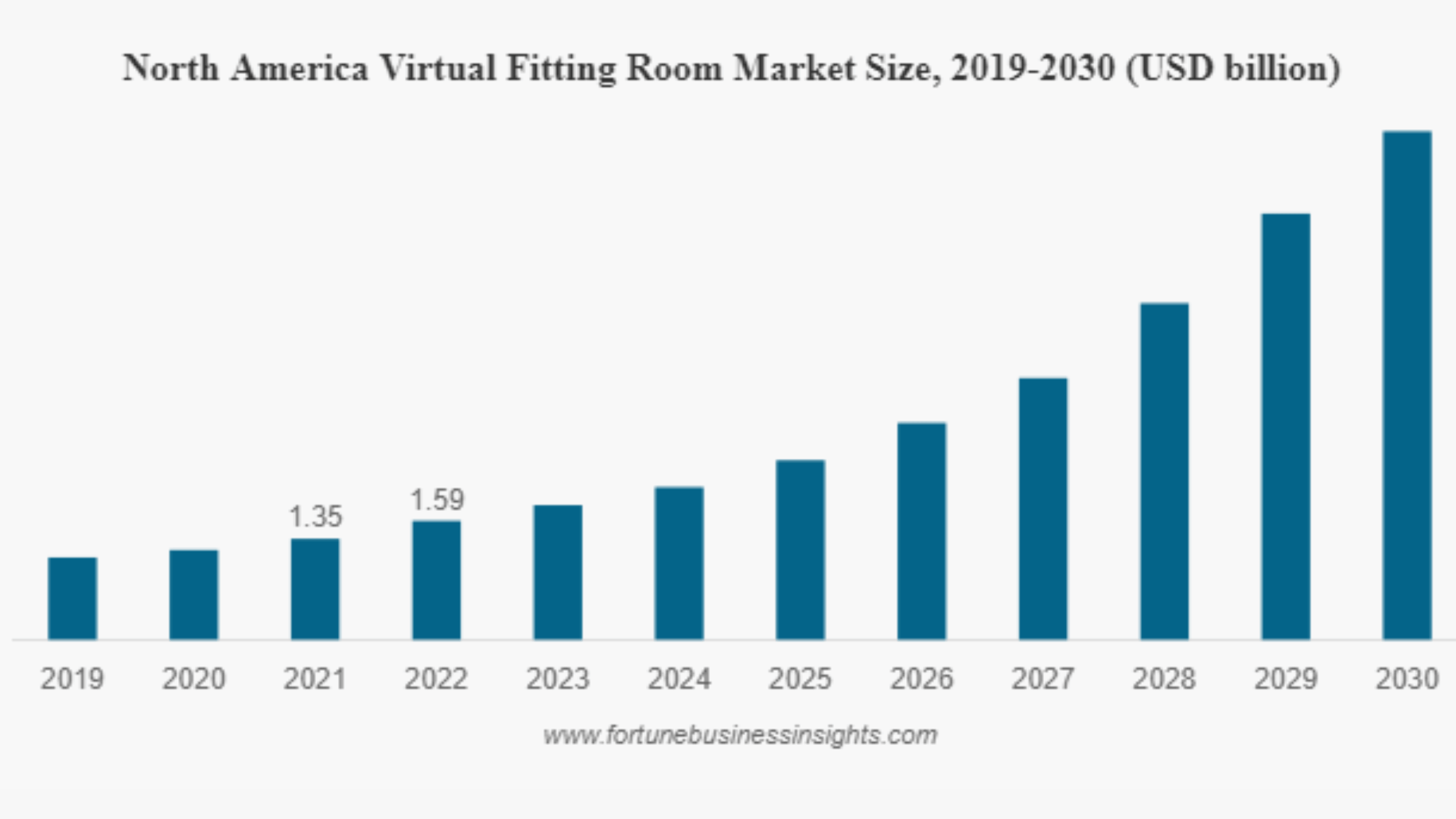
As per the Fortune Business Insights, the global virtual fitting room market is raising from $3 billion in 2022 to $13 billion in 2028.
Companies working on Metaverse go a step further and provide app-based virtual dressing rooms to facilitate their customers with a virtual try-on of outfits. These virtual fitting apps on mobile use augmented reality and artificial intelligence to provide customers with personalized avatars and 3D visualization.
This helps customers in making informed purchases and enhances their shopping experience. Moreover, the integration of augmented reality into the customers’ purchase journey has become a norm, with around 71% of consumers shopping more with brands that incorporate AR.
Besides, the apparel segment dominates the Metaverse eCommerce store due to the significant use of this technology.
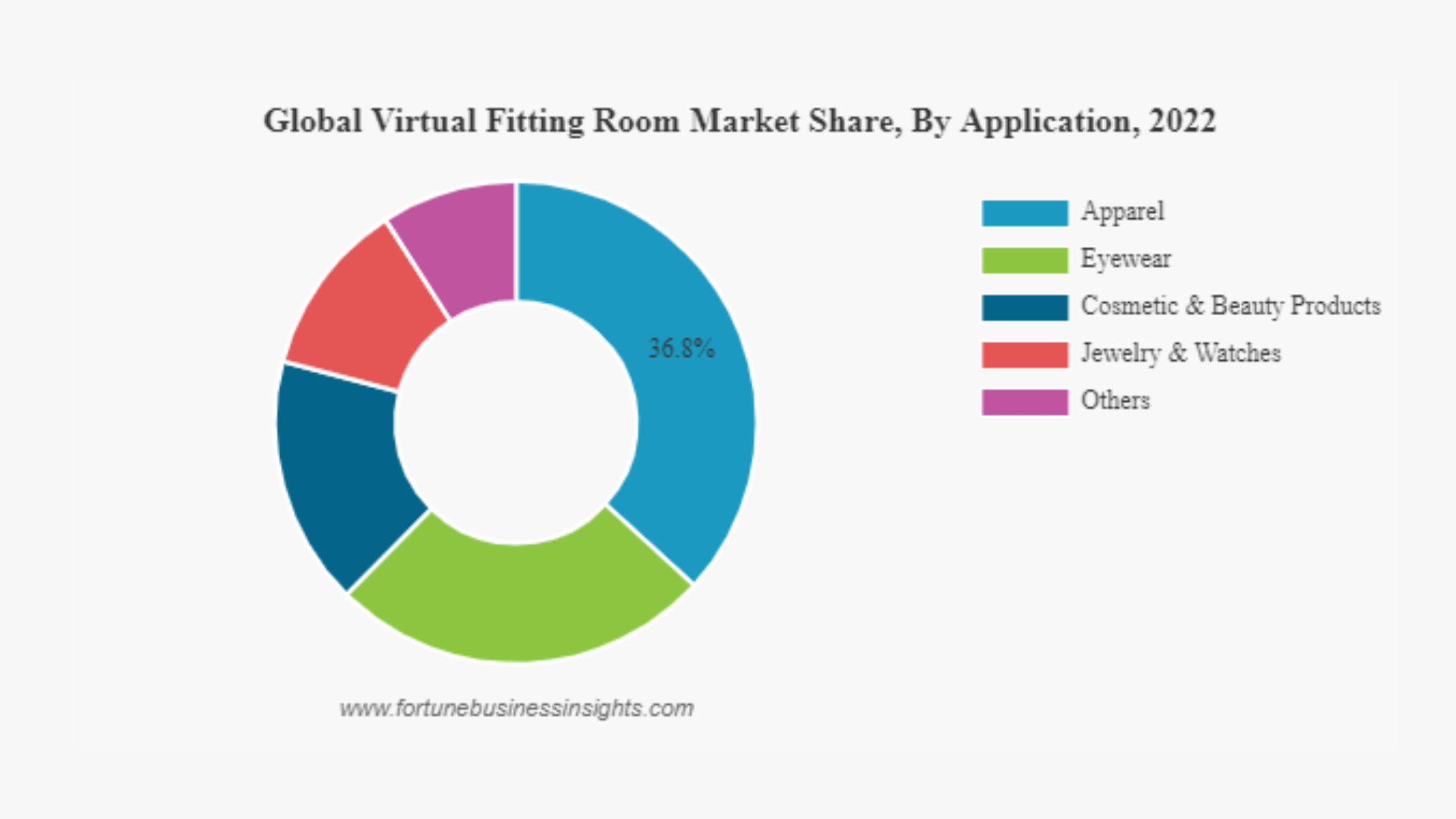
Various leading companies in Metaverse have invested in virtual fitting room technology, revolutionizing the way we shop.
- Coca-Cola

Coca-Cola has joined forces with Fortnite Created, a metaverse platform, to create a virtual paradise called “Pixel Point.” Here, players can interact with Coca-Cola’s latest product, “Zero Sugar Byte,” which the company describes as having “originated in the metaverse.” The brand has embraced the digital age and is leveraging the virtual world’s popularity to introduce its new flavor to gamers.
- Charlotte Tilbury Virtual Reality Store

Charlotte Tilbury has partnered with Obsess to create an immersive virtual store. The “Shop with Friends” feature allows friends to shop together by logging on in real-time, giving tips, and interacting with virtual stylists. The brand’s commitment to digital-first experiences is demonstrated by its omnichannel functionality.
- Samsung
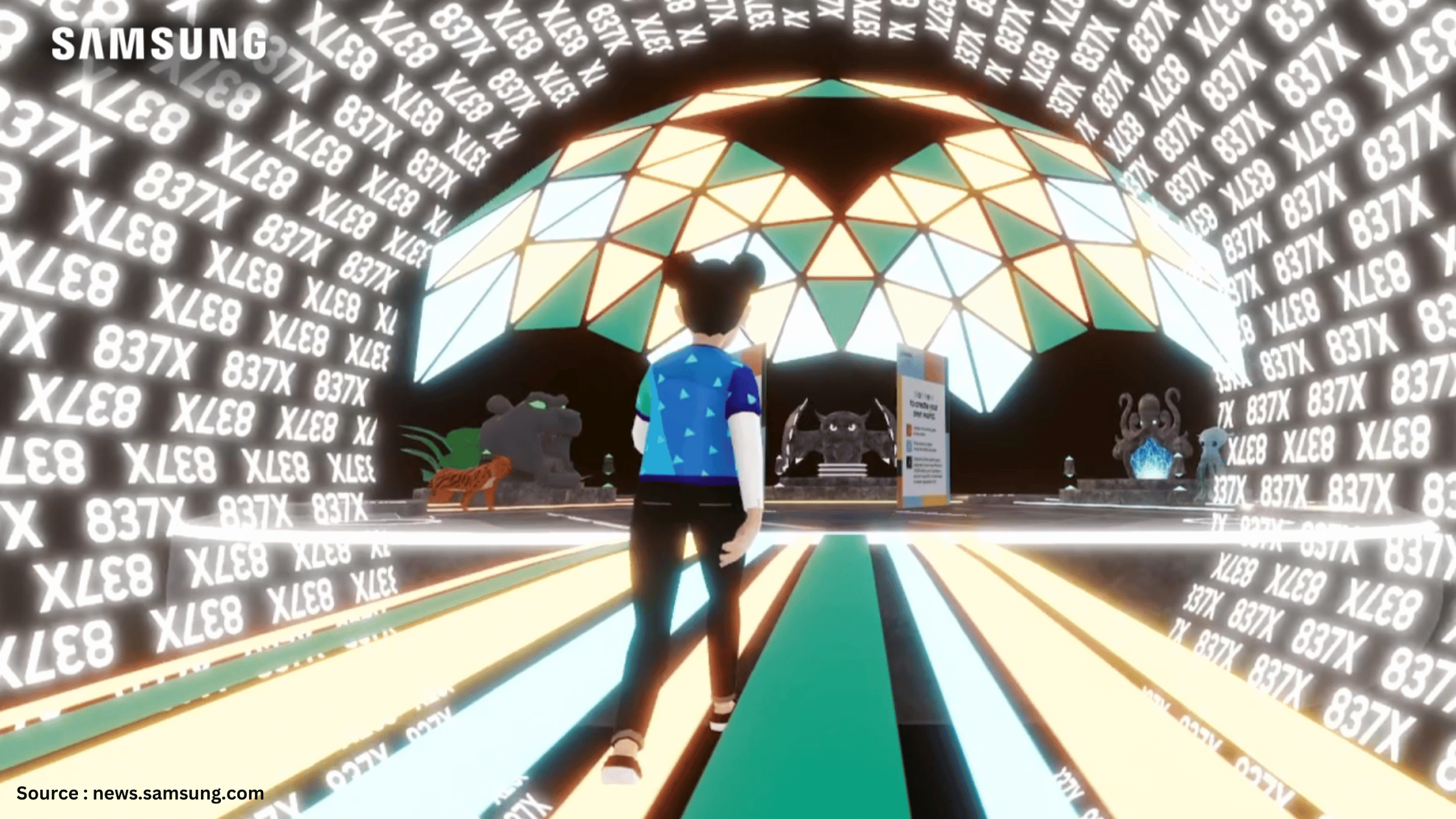
Samsung’s newly transformed 837X store is offering guests an opportunity to immerse themselves in a virtual world filled with endless possibilities. Samsung is empowering people to create the world they want. Over 120,000 fans have already explored Samsung’s immersive virtual world in Decentraland since January, experiencing unique cultural and technological connections.
How Can iWebServices Help In Metaverse eCommerce Platform Development?
With the rise of Metaverse technology and its potential in the eCommerce industry, many businesses are now looking into developing their own Metaverse eCommerce platforms. However, this can be a daunting task, as it involves combining two complex fields – eCommerce and virtual reality.
This is where our team can help. We specialize in Metaverse eCommerce platform development, utilizing the latest technologies and tools to create engaging and immersive experiences for customers.
Our team of experts can handle the entire development process, from conceptualization to deployment. We can assist in creating a seamless user interface, implementing secure payment systems, and integrating with existing eCommerce platforms.
Our developers also have a deep understanding of virtual reality and augmented reality technologies, ensuring that your platform is not only functional but also visually stunning.
Moreover, partnering with us for your Metaverse eCommerce platform development needs can help you stay ahead of the competition and offer your customers a truly unique and immersive shopping experience.
Wrap up!
The Metaverse’s integration with eCommerce holds immense transformative potential. While challenges such as privacy, infrastructure, integration, and ethical considerations need to be addressed, the Metaverse offers enhanced customer experiences, expanded market reach, data-driven insights, and innovative business models.
Embracing the Metaverse can provide businesses with a competitive edge in the ever-evolving eCommerce landscape. As the Metaverse continues to grow, it is essential for businesses to adapt, navigate potential challenges, and seize the opportunities it presents for a prosperous future.
 May 26, 2023
May 26, 2023
